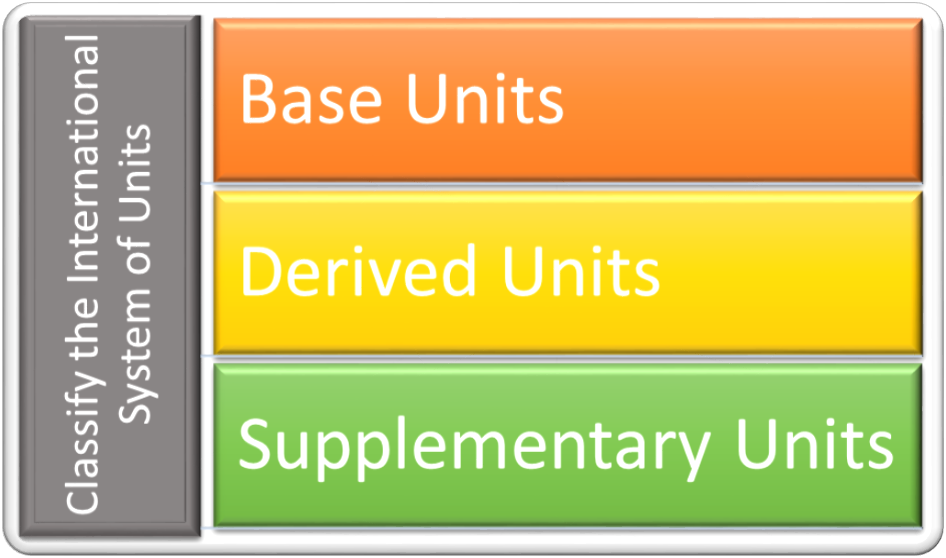To classify the International System of Units (SI) is crucial in the field of science, engineering, and daily life. Definitions of these units–base, derived, and supplementary–along with clear examples is listed here.
Table of Contents
Introduction
Units play an important role in our lives, whether we are measuring length, weight, or temperature. They provide a standard method for quantifying physical quantities. The most widely used system today is the International System of Units (SI), established to create uniformity in measurement across the world.
The SI system helps in making scientific communication easier. Before its adoption, many systems existed, leading to confusion and miscalculations. For instance, different countries had different definitions of the same quantities. The SI system resolved this by providing an internationally accepted set of units.
Understanding of these categories is essential, especially in scientific fields where precision is crucial.
What is a Unit?
A unit is a standard measurement used to quantify physical quantities.
For example, the metre (m) is a unit for measuring length. It gives us a consistent way to measure how long or short something is, no matter where one live in the world.
SI System of Units
The International System of Units (SI) is a globally accepted standard for measuring physical quantities. It was established in 1960 during the 11th General Conference on Weight and Measure (CGMW), it ensures that measurements are consistent worldwide.
The SI is based on seven fundamental units and among those 3 are the most basic one. These are,, meter, kilogram, and second, from which other units are derived.
Classify the International System of Units
These unit are classified into 3 groups as shown below.

Base Units
It can be defined as, “the fundamental units, considered as building blocks of the SI system and measure basic physical quantities.”
Each of this unit corresponds to a particular type of measurement. There are exactly 7 seven such quantities in SI.
Examples

Derived Units
It can be defined as, “units to express derived quantities, formed by combining base units, and measure more complex physical quantities.”
Each of this unit also corresponds to a particular type of measurement. There are numerous such quantities in the International System.
Examples

Supplementary Units
It can be defined as, “units that can neither be classified as base units nor as derived units and are part of the SI system to measure angles.”
These units have now been integrated into derived units but are still sometimes referenced. There are mainly two such units.
Examples

Radian
In the SI system, the unit of plane angle is the radian (rad). One radian is defined as,
“the angle subtended by an arc whose length is equal to the radius of the circle.”
Steradian
The SI unit of solid angle is the steradian (sr). One steradian is defined as,
“the angle subtended by a surface area equal to the square of the radius on the surface of a sphere.”
Conclusion
The SI has transformed how we measure physical quantities. Its universal nature eliminates the inconsistencies that earlier systems caused. By classifying units into Base, Derived, and Supplementary categories, the SI provides a clear framework for scientific and everyday measurements.
The first units (base) are the foundation of the system, covering essential quantities like time and temperature. The second units (derived) build upon these basics, allowing us to measure more complex phenomena like energy and force. Supplementary, though no longer standalone, continue to support angular measurements in various fields.
Understanding these classifications ensures accurate communication of measurements across borders and disciplines.
The consistency of SI fosters collaboration and innovation in science and technology, helping us solve complex global problems. As we move forward, this system will continue to serve as the backbone of scientific advancement.
Frequently Asked Questions (FAQs)
What is the SI system?
The SI, an abbreviation of the International System of Units, is used worldwide for standardising measurements of physical quantities.
How many base units are there in the SI?
There are seven fundamental units in the SI, including the 3 most basic one i.e., metre, kilogram, and second.
What is the difference between base and derived units?
Base (Fundamental) units measure basic quantities like length, mass, and time, while derived ones are combinations of base, such as force (Newton = kg·m/s²).
What is an example of a derived unit?
An example of a derived is the Newton (N), which measures force. The Joule (J) for energy, Watt (W) for power, the Pascal (Pa) for pressure are also derived ones.
Why are supplementary no longer a separate category in the SI?
Supplementary like radians have been incorporated into derived for simplicity, though they are still commonly used for angular measurements.
How does the SI benefit scientific communication?
The SI provides a universal set of units, eliminating confusion and allowing scientists around the world to collaborate effectively. It is considered as one of the greatest achievement in the field of science at that time.
What is the base unit for temperature in the SI?
The base unit for temperature is the Kelvin (K) in the SI. However, it is usually measured either in Celsius (oC) or in Fahrenheit (oF) in our daily lives.
How is force measured in the SI?
Force is measured in Newtons (N), a derived unit that combines kilograms, metres, and seconds.
What unit is used to measure electric current?
The SI unit for electric current is the Ampere (A) which is also referred to as Coulomb per second (C/s).
Is candela a base quantity or a derived quantity?
Luminous intensity is considered as a basic physical quantity, and hence, according to International System of Units (SI), candela is classified as a base unit rather than a derived one.
